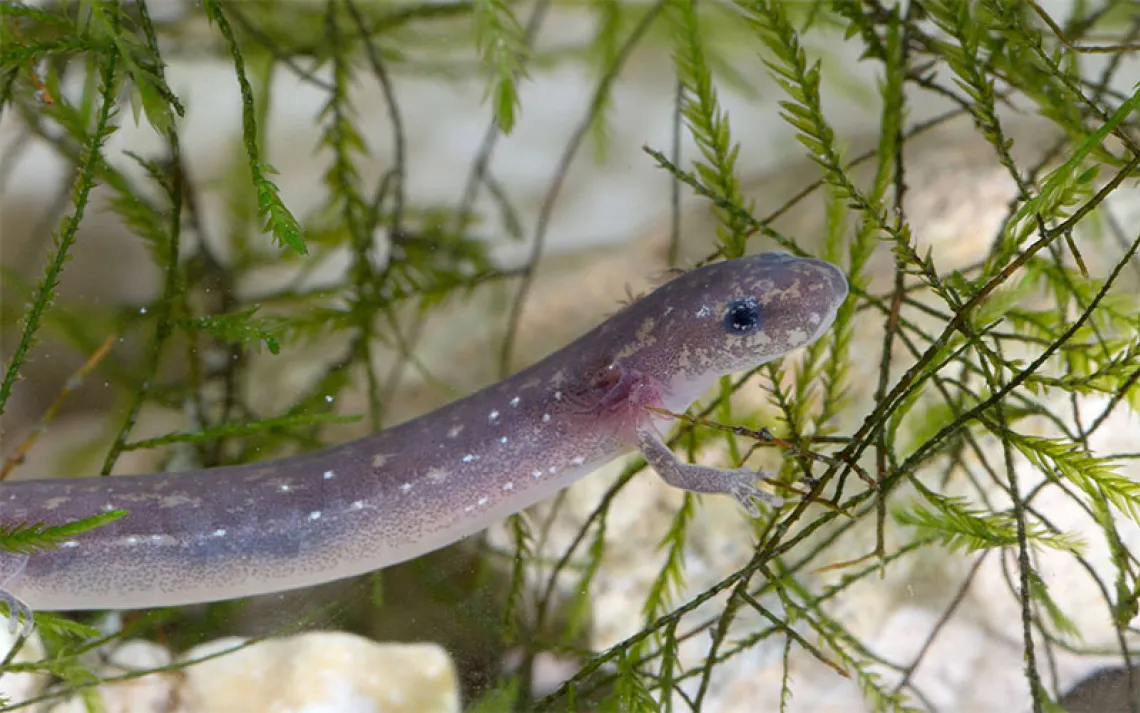7 Amazing Animal Musicians
From frogs chirping through the night to whales humming across the oceans, nature is full of fantastic music.
From frogs chirping through the night to whales humming across the oceans, nature is full of fantastic music. Not all of it sounds pleasant to the human ear, of course (the droning of cicadas can cause ear damage at close range, and even crickets can wear out their welcome), but it's hard not to admire the way animals make such complex and astounding noises.
There's more to animal calls than just taking a deep breath and hollering. Some animals play their bodies like instruments, and others make sounds that humans need machines to pick up. To highlight some of this diversity, we've compiled a list of 7 unusual animal sounds, some of which make music that seems almost...philharmonic.
Mother Nature's 7 Animal Orchestra
The Bass: Elephant
Elephants may be best known for their raucous trumpeting, but they also make the ground vibrate with "infrasound," sounds too low for the human ear but that can travel up to six miles away. What exactly is being communicated in these deep sounds is unknown, but female elephants will often make infrasound when they're ready to mate, and these calls seem to get the attention of amorous males. Elephants can pick up infrasound in two ways: through the bones of their legs that transmit the vibrations to their inner ears, or with nerves in the pads of their feet. While listening to infrasound, elephants will often press their trunk into the ground and lift one leg onto its toes, possibly to hear the sound more clearly.
The Soprano: Bat
For a long time, it was believed that bats only made sounds either to echolocate, or to identify their young in colonies. However, it's now known that bats have much more involved social lives, and that some species guard territories and court females with songs too high for humans to pick up. Studies have unfortunately not been done on all 1,200 species of bat, but the white-lined bat, sac-winged bat, and Brazilian free-tailed bat have all been recorded singing to their mates and to contest other males. Bat songs are two to four times higher than humans can hear, but when slowed down, they sound a lot like chirping songbirds.
The Duet: Mosquito
Wait, what? Mosquitoes don't make music... do they? Although the whine of a mosquito's wings is irritating to humans, it sounds like amore to other mosquitoes. Female Aedes aegypti mosquitoes whine at 400 hertz, while males whine at 600 hertz, a useful adaptation to make sure males don't accidentally go chasing each other. However, when they meet, both mosquitoes alter their wingbeats so that their harmonics match. Who would have thought that these buzzy bloodsuckers had an ear for intervals?
Drums: Woodpecker
Woodpeckers are adapted to peck a lot of wood before they get hurt or tired, with an extra-thick beak, powerful neck, and reinforced skull. But they don't sing. They can chirp, but don't have a long, complex song to attract mates. Instead, to communicate, woodpeckers do what they do best -- they drum. Apart from excavating and drilling for food or to make nests, woodpeckers will knock on hollow tree trunks in a pattern unique to their species, both to defend territory and to attract mates. Both male and female woodpeckers drum, and in suburban areas, they like to drum on rain gutters and houses. After all, what's a house but a big hollow tree? Check out the video to see a woodpecker drumming on a lamp post.
Strings: Club-winged Manakin

Sign up to receive Sierra News & Views
Get articles like this one sent directly to your inbox weekly.
With this action you affirm you want to receive Sierra Club communications and may vote on policy designated by the Sierra Club Board.
Manakins are a family of small, colorful birds native to Central and South America. All male manakins gather to display to females, a behavior known as "lekking." But for the club-winged manakin, a display doesn't mean strutting or singing. These birds have strange feathers, including a club-shaped "scraper" and a ridged "comb." The male manakin vibrates its wings faster than a hummingbird, and the scraper rubs across the ridges of the comb, vibrating all the bird's primaries and making a tone like a violin. The club-winged manakin even has solid bones in its wings, where most birds have hollow ones, all the better for making sound.
Woodwinds: Anna's Hummingbird
When it comes to courtship, hummingbirds cover all their bases. Not only do the males sport dazzling, ridescent feathers, and not only do they sing complex songs, but they also perform daredevil stunts for their female audience, diving out of the sky at great speed before pulling up at the last second. Many times, they combine tactics, singing or flashing their feathers as they fly. And when Anna's hummingbirds dive, they are heard to produce a loud squeak or whistle. As it turns out, this squeak isn't made by the hummingbird's voice, but rather by its tail! Specialized feathers on the edges of the hummingbird's tail catch the wind when it blows at high speed, and vibrate, producing a brilliant punctuation to the bird's death-defying display.
Brass: Elk
Human beings have a "descended" larynx, a voice box that lies down in the throat. In men, this shows as the "Adam's apple." The only other land animals to have this feature are elk and red deer. Not only do these deer have Adam's apples, but they can actually lower their voice boxes even further, all the way into their chests! This makes the males' bugle calls even louder and lower, making them sound larger than they are.
 The Magazine of The Sierra Club
The Magazine of The Sierra Club



